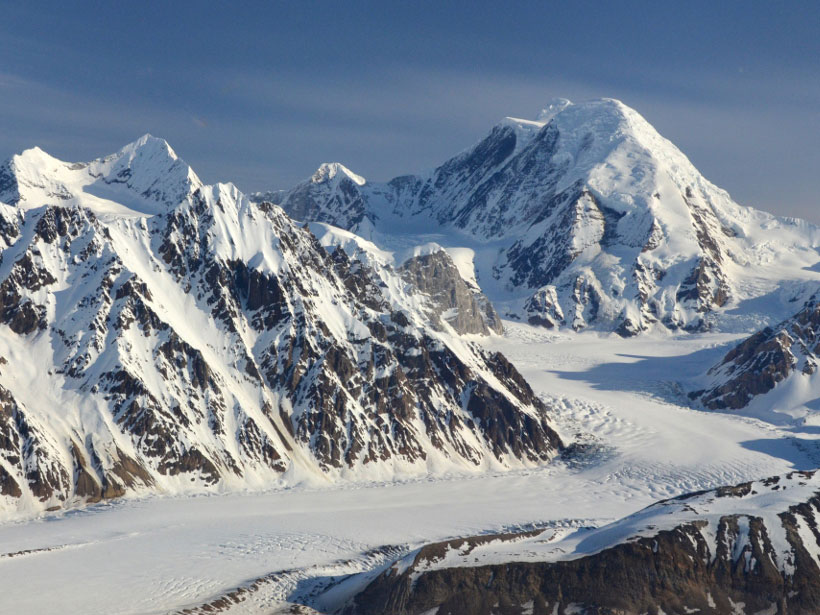Source: Earth’s Future
The world’s glaciers are retreating. Temperatures in the Arctic and in mountainous regions where glaciers form are rising faster than anywhere else on Earth. Many glaciers are now the smallest they’ve been in tens of thousands of years.
Although glaciers account for only a fraction of global ice mass—the Greenland and Antarctic ice sheets make up the bulk—their meltwaters still contribute significantly to sea level rise. However, there are several sources of uncertainty in projections of glacier mass change and related sea level rise: inherent uncertainty in glacier and climate models, unknown future emissions, natural climate variability, and ambiguity in the size and volume of glaciers today. All these factors contribute to variable sea level rise predictions.
In a new study, Marzeion et al. compared 11 glacier models, 10 global climate models, and 4 Representative Concentration Pathways (RCP; scenarios describing projected concentrations of carbon in the atmosphere) to estimate the contribution of glaciers to sea level rise throughout the 21st century and to identify the main drivers of uncertainty over that time period.
The study found that glacier areas will decrease throughout the 21st century in every region and across all four emissions scenarios, but the scale of ice loss varied drastically. Under the RCP2.6 scenario, which imagines stringent mitigation efforts to reduce emissions, glaciers will lose about 18% of their mass and begin to stabilize in some regions by 2100. Under RCP8.5, a high-emissions scenario, glaciers will lose 36% of their mass, and many regions will experience complete glacier loss. Estimates of sea level rise ranged from about 79 millimeters of sea level equivalent (SLE) by the end of the century under the low-emissions scenario to about 159 mm SLE under the high-emissions scenario. Both projections are slightly lower than, but within the uncertainty ranges of, previous median projections.
The team found that the dominant source of uncertainty until midcentury is in ice mass loss projected by glacier models. This glacier model uncertainty grows modestly throughout the century but is eclipsed in the second half of the century by uncertainty associated with emissions scenarios. (Earth’s Future, https://doi.org/10.1029/2019EF001470, 2020)
—Kate Wheeling, Science Writer
Citation:
Wheeling, K. (2020), Glacial contributions to 21st century sea level rise, Eos, 101, https://doi.org/10.1029/2020EO143700. Published on 15 July 2020.
Text © 2020. AGU. CC BY-NC-ND 3.0
Except where otherwise noted, images are subject to copyright. Any reuse without express permission from the copyright owner is prohibited.

